Daleks, hard cops, custard pies and stars of pop: the 10 ultimate ’70s TV shows

Gallifreyan gallivanter: Tom Baker attempts to escape from those pesky Daleks in Doctor Who, the show that nobody could take their eyes off – even if they were hiding behind the sofa
So, just over a couple of months ago, this very blog wallowed in the wonderfulness of 1960s TV… and, with this post, peeps, it’s finally time – like it or not – to take in the following decade’s best offerings of television magic, for, yup, here’s the 10 greatest exponents of gogglebox goodness from the era of garish wallpaper, Raleigh choppers, the Bay City Rollers, clackers and Brian Clough – according to yours truly that is, at least…
~~~
CLICK on the TV show titles for video clips
.
Doctor Who (1963-89)
The legend: The universe’s – or at least Earth’s – longest-running sci-fi TV show and one of the longest of any type ever to have graced UK telly screens, this early Saturday evening BBC giant featured a space- and time-travelling alien protagonist who regenerates every few years, has an eye for the ladies when selecting his companions and calls a bigger-on-the-inside police phone box home.
The lowdown: Launched way back in the early ’60s, Doctor Who is, of course, an international televisual institution. However, despite proving very popular from its launch thanks in part to those over-sized pepper pots responsible for ‘Dalekmania’, it really hit its stride when it went colour in the eras of two hugely memorable leads: dandyish patrician Jon Pertwee (1970-74) and playfully/ crazily boho Tom Baker (1974-81). Moreover, in the ’70s the show offered up horror-like, detective-esque and caper-ish adventures, introduced villains/ monsters of the calibre of evil Time Lord The Master and the subterranean Silurians, and boasted companions including the unforgettable Sarah-Jane Smith, as well as Leela, the two Romanas and Jo Grant and the rest of the U.N.I.T. gang. Oh, and, of course, K-9 – affirmative, master.
The lines: “Reverse the neutron flow!”/ “Would you like a jelly-baby?”
The unlikely but true: Although ostensibly a kids’ show, Doctor Who achieved an incredible audience of 16.1 million viewers for the final part of the barmy but brilliant 1979 story City Of Death, partly owing to a strike putting ITV off the air for the night.
The legacy: Where to start – and end? An indubitably influential TV drama, Doctor Who is a cornerstone of sci-fi culture, having spawned novelisations, audio and comic books, movies and from, 2005 onwards, a rejuvenated and hugely successful series.
Read more about the ’70s – and other – eras of Doctor Who here
~~~
Top Of The Pops (1964-2006)
The legend: For much of its five decades, the BBC’s Top Of The Pops was essential viewing for the youth of Britain, allowing them to put faces to the stars they listened to on the singles they bought. And, during the ’70s at least, was for their dads too thanks to the presence of marvellously easy-on-the-eye dance troupe Pan’s People (see above image).
The lowdown: Following in the wake of ITV’s breakthrough ‘Beat music’ showcase Ready Steady Go! (1963-66), Top Of The Pops debuted on New Year’s Day 1964, hosted by the irrepressible Jimmy Savile, and never looked back. Like Doctor Who, it really found its feet in its second decade, when the desire of rock acts such as David Bowie, T-Rex and Slade to get ahead of each other by dressing in ever more outrageous garb whenever they appeared ensured the programme helped launch an entire music genre: glam rock. Later in the decade it became arguably too safe, ignoring the rise of the provocative punk movement until it became unavoidable, but its popularity never dimmed through either the ’80s or the ’90s, proving a major platform for New Wave, Dance, R ‘n’ B, Britpop and all the biggest names in pop and rock – and the one-hit-wonders.
The line: “It’s number one – it’s Top Of The Pops!”
The unlikely but true: Because the Beeb wiped the tapes of all but 20 of the first 500 episodes of the show, the only surviving footage of The Beatles on Top Of The Pops can be seen in the first part of the 1965 Doctor Who story The Chase.
The legacy: Clearly the world’s first – and, in its heyday, best – music chart TV show, it eventually provoked more earnest rivals in the shape of ITV’s anarchic Peter Cook-fronted Revolver (1978), Channel 4’s more successful The Tube (1982-87) and, of course, the BBC’s own The Old Grey Whistle Test (1971-87). In fact, in the ’90s the BBC sold the show’s format abroad, ensuring it was broadcast in nearly 100 different countries.
Read more on – and view an unmissable image collection of – Pan’s People here
.
Match Of The Day (1964-present)
The legend: The UK’s first and greatest top division football highlights programme, famed not only for showing edited versions of Saturday’s matches in order of excitement, but also for its irresistible brassy theme tune, unchanged during its entire broadcasting history.
The lowdown: The third and final of this list’s offerings to have originated in the ’60s, but which became inescapable and indispensable telly the following decade, Match Of The Day – despite its genius concept – has only ever been as good as the football matches it features. And in the ’70s, English First Division football rocked – or, to be precise, English First Division football matches rocked. This was the era of Brian Clough’s Derby County (and then Notts Forest) and Don Revie’s Leeds Utd (those perennial underachievers), Liverpool’s red wave of success and swaying hordes in the Kop, as well as flamboyant characters like the perma-permed Kevin Keegan, the mouthy Franny Lee (later a toilet roll manufacturer) and Man City’s irrepressible manager Malcolm Allison. And, of course, it was also the era of Jimmy Hill presenting the show itself – unforgettable for the inexplicable beard that only made more obvious his Forsyth-esque jutting chin.
The lines: “1-0!” (commentator Bob Coleman)/ “Look at his face – just look at his face!” (commentator Barry Davies about a scorer after a particularly impressive goal)
The unlikely but true: After the show’s first season, several football clubs attempted to block a renewal deal with the BBC, fearful that broadcasting further highlights on TV would result in a drop in match attendances.
The legacy: Quite simply, all subsequent sport coverage owes an inestimable debt to Match Of The Day‘s early days. The filming, editing and showing of match highlights was honed on the show, as were groundbreaking techniques such as the slow-mo replay, public votes (‘Goal Of The Month’/ ‘Goal of The Season’) and general sport TV presenting and commentating. Oh, and without Match Of The Day, Des Lynam would never have become a national institution, which clearly would have been a travesty equal to Maradona’s ‘Hand of God’.
~~~
Parkinson (1971-82)
The legend: According to a recent BBC4 season, the ’50s through to the ’70s was the golden age of ‘Talk’ on British TV; well, for the most part, the ’70s surely owes its place in this era thanks to one programme in particular, Michael Parkinson’s unforgettable and essential Saturday night chatshow, on which he was joined by the cream of celebrity, past and present, making for compelling viewing on almost every occasion.
The lowdown: The son of a miner from Barnsley and previously a print journalist, Parky plunged into primetime telly and proved an instant hit, the British public lapping up his intimate yet accessible interviews with star names. Always professional, if sometimes a little Yorkshire-prickly, his relaxed, attentive, but no-nonsense approach opened up everyone from George Best to Kenneth Williams and Jacob Bronowski to Peter Sellers – in a manner peeps had never before seen. The show is best remembered for its host’s highly entertaining encounters with the legend that is Muhammad Ali and making an overnight star of comedian Billy Connolly (who was barely known outside of Glasgow before his first appearance). Oh, and for the wonderful moment when for once a guest got the better of Parky – namely Rod Hull’s Emu (see image and linked clip above).
The line: “I think you’re a great flirt” (Shirley MacLaine to Parkinson, in a very overt display of flirtation herself)
The unlikely but true: Parkinson appeared on the cover of the Paul McCartney And Wings album Band On The Run, on the understanding that McCartney would then appear on this show; this wasn’t to take place until 1999.
The legacy: Every UK chatshow host worth their salt nowadays admits that Parky was the best ever, ensuring his influence on the TV genre is inestimable. Indeed, he eventually came back with a new series (1998-2004), whose run was spread across both the Beeb and ITV and, although lacking much of the former’s bite, was still hugely popular with the viewing public.
~~~
Kojak (1973-78)
The legend: A king among the slew of oft daft but always entertaining detective dramas that swamped American TV in the ’70s, Kojak was the hard-hitting, cool-as-hell hit that made baldy Telly Savalas a star – and unlikely sex symbol.
The lowdown: First appearing in a TV movie based on a real-life miscarriage-of-justice crime story that changed US law, the character of Kojak was a street-wise, hip, lollypop-sucking cat that also happened to be an ace Manhattan detective and the series that featured him – a neo-realist, gritty police drama – an immediate ratings winner when it debuted on the CBS network in October ’73. Its lead actor, Telly Savalas, had made a name for himself as heavies on the big screen in both The Dirty Dozen (1967) and the Bond flick On Her Majesty’s Secret Service (1969), but it was as the rough-tough ‘tec with a heart Kojak that he became an international institution, starring in five original series in the ’70s and seven TV movies in the ’80s.
The line: “Who loves ya, baby?”
The unlikely but true: Telly’s brother George Savalas appeared in every one of the drama’s original episodes as one of Kojak’s squad, yet he was billed in the credits as ‘(George) Demosthenes’.
The legacy: Owing to its worldwide popularity, Kojak boasts a huge cultural impact that continues to this day – in the US, the type of emergency light that Kojak (like real US cops) slung atop his unmarked car whenever in pursuit became known as a ‘Kojak light’ among police. In Brazil (where Kojak is enormously popular), the protagonist’s name became widespread slang for a bald man, while the phrase ‘I won’t give a chance to Kojak [i.e. ‘I won’t make any mistakes for the police]’ became popular among Rio criminals and, later in a non-crime-and-police-related connotation, among the ordinary populace.
~~~
Tiswas (1974-82)
The legend: The original – and for many still the greatest – Saturday morning magazine show for kids, Tiswas became cult-viewing and then a mainstream phenomenon for ankle-biters, students and parents up and down the British Isles.
The lowdown: From the start, a cheap and cheerful – and achingly ’70s-looking – attempt to fill its Saturday morning schedules in the Midlands by ITV franchise ATV, Tiswas (or This Is Saturday So Watch And Smile) was an immediate hit among its children-targeted demographic, in addition to hungover students, thanks to its commitment to crazy games and anarchic antics over the soberer, even ‘middle class’ format offered by the BBC’s answer to its growing success, Multi-Coloured Swap Shop (1976-82). With its highly childish and louche tone that relied heavily on throwing at guests custard pies and all things messy (thanks to black-masked villain The Phantom Flan Flinger), poking fun at established media and stars (Lenny Henry as ‘Trevor McDoughnut’ aka Trevor McDonald) and – perhaps most important of all – strong kids-based audience participation, Tiswas was frankly always destined to be a hit, especially as it developed moralising critics who believed it encouraged bad behaviour.
The line: “This is the song we love as a four to sing/ We can’t go wrong, we’re happy as a king/ We beat the drum as we march along, we clap a cymbal and bang the gong/ We sing our song, The Bucket Of Water Song”
The unlikely but true: For at least part of its run, Tiswas was produced and directed by actor Glyn Edwards, who would go on to play Dave, owner of the Winchester Club bar in Minder (1979-94); underlining the word-of-mouth sensation the show was, it actually didn’t go nationwide across all ITV regions until its sixth season in November 1979.
The legacy: Tiswas established a hugely successful formula that, to varying degrees, Saturday morning kids’ shows have replicated for decades since. As mentioned, the Beeb’s Swap Shop – itself a big hit – was conceived to counter its success and the mainstream impact of this rivalry was confirmed by football fans of the era shouting ‘Tiswas’ and ‘Swap Shop’ across at each other on the terraces. In addition, its runaway appeal established the TV careers of not just main hosts Chris Tarrant and the sexy Sally James, but also contributors Lenny Henry, Bob Carolgees (and his puppet Spit The Dog), Jasper Carrott and 1980s Doctor Who star Sylvester McCoy.
~~~
The Sweeney (1975-78)
The legend: American TV may have got there first with Kojak, but UK telly quickly caught up with The Sweeney, a wildly popular police drama that showcased the work and life of cop crime-fighters in a manner so hard-hitting and brutally honest, it’s surely never been topped.
The lowdown: Made by Thames Television’s Euston Films for ITV, it grew out of a successful one-off drama Regan, named after its lead character, the uncompromising, law-bending, womanising, but ultimately heroic DI Jack Regan (John Thaw) of the London Metropolitan Police’s armed robbery/ violent crime branch, the Flying Squad. Almost immediately, though, The Sweeney (whose title was derived from Cockney rhyming slang: ‘Flying Squad/ Sweeney Todd’) developed into a two-hander, with Regan’s loyal lieutenant and fellow womaniser DS George Carter (Dennis Waterman) sharing almost as much screen-time. No question, this was revolutionary TV for the time: not only did it depict the violence and genuine danger of this line of police work (turning up its on-location action factor to 11), but it didn’t hold back in a dramatic sense either, being only too happy to regularly show-up the foibles and flaws of its lead characters (in doing so, at times arguably presenting Regan as something of an anti-hero).
The lines: “We’re The Sweeney, son, and we haven’t had any dinner”/ “You’re nicked!”
The unlikely but true: At the time the series was airing (to audiences as high as 19 million), the real Flying Squad was found to be involved in major criminal corruption – its chief superintendent was convicted of five counts of corruption and jailed for eight years in 1977, while 12 more officers were convicted and others resigned.
The legacy: The Sweeney was hugely influential; British TV police drama would never be the same after it – the days of Dixon Of Dock Green (1955-76) and Z-Cars (1962-78) were very soon over. Not only was it followed by similarly hard-edged (if more fantastical) fare like The Professionals (1977-83), it also spawned two spin-off cinema releases Sweeney! (1977) and Sweeney 2 (1978). In popular culture, the car that Regan and Carter bombed around in (the Ford Consul) became almost as big a star as Thaw and Waterman, while the series itself was mentioned in the pop hits Wow by Kate Bush (1979) and Cool For Cats by Squeeze (1978). And, as if that’s not enough, anyone who’s seen the brilliant Life On Mars (2006-07) will instantly recognise its entire premise as a thinly veiled tribute to The Sweeney.
Read more about The Sweeney, Kojak and other classic detective shows from yesteryear here
~~~
The Good Life (1975-78)
The legend: Easily one of the best recalled – partly owing to the fact it’s always being repeated – and surely one of the very best of ’70s UK sitcoms, this is the irresistible comedy concoction that put self-sufficiency on the map and made the delectable Felicity Kendal the decade’s thinking man’s crumpet.
The lowdown: Remembered, albeit affectionately, but nonetheless as the epitome of the comfortable, middle-class British sitcom (from the golden age of the comfortable, middle-class British sitcom), writers Bob Larbey and John Esmonde’s The Good Life in fact subtlely, smartly and very wittily deconstructed the South-East England, suburban existence by having its two protagonists, Tom and Barbara Good, give up on the rat-race and social-climbing that defines their next-door neighbours and best friends, Jerry and Margo Leadbetter, by attempting to live on only the vegetables they produce from their garden and the livestock with which they fill it (Pinky and Perky the pigs, Geraldine the goat and Lenin the cockerel). At first conceived as a BBC vehicle for actor Richard Briers, it made stars of the rest of the quartet that made up the two couples, Felicity Kendal (whose pert jeans-clad posterior became almost as famous as its owner), Paul Eddington and, perhaps most of all, Penelope Keith, whose perfectly realised Surbiton snob Margo became regarded as an all-time classic TV character – not just in the UK but arguably in the US too, where the show’s still re-run today under the title Good Neighbors.
The lines: Tom: “Come on, Margo, get your [party] hat on”/ Margo: “This is the Daily Mirror“/ Tom: “I’m terribly sorry – please, have the The Daily Telegraph“
The unlikely but true: As if underlining its popularity with Middle England and those who defined British status quo in the ’70s, whom ironically it satirised each week, the show’s final one-off episode When I’m Sixty-Five was recorded before The Queen and The Duke Of Edinburgh.
The legacy: The comedy’s huge success in its own era (as well as all its subsequent repeats) not only ensured it firmly remains in the British psyche today, but after the show’s finish also rewarded its stars with BBC comedy vehicles of their own: Briers in Ever Decreasing Circles (1984-89), Kendal in Solo (1981-82), Eddington in Yes Minister (1980-84) and Yes Prime Minister (1986-88) and, maybe most notable of all, Keith in the even more popular To The Manor Born (1979-81). Moreover, in a sign that the series was both culturally influential and ahead of its time, over the decades many observers have pointed to it as being instrumental in the rise of self-sufficiency habits and the hobby farm.
Read more on – and view an unrivalled image collection of – Felicity Kendal here
~~~
Saturday Night Live (1975-present)
The legend: The ground-breaking, trend-setting and impossible-to-ignore satirical, skit-based weekend comedy showcase that’s been entertaining America non-stop for more than 35 years.
The lowdown: NBC’s Saturday Night Live – or SNL, as the media likes to refer to it – is indelible proof that in the second half of the ’70s it was the States and not Britain that was pushing the envelope when it came to TV comedy. The UK may’ve revolutionised humour on the box the previous decade and into the ’70s with That Was The Week That Was (1962-63), Till Death Us Do Part (1965-68), Monty Python’s Flying Circus (1968-74) and Fawlty Towers (1975 and ’79), but the white-hot new kid on the block came from the US – and it quickly grew into a giant. The brainchild of producer Lorne Michaels (still its head-honcho today), SNL was first broadcast in September 1975, featuring a cast of performers including John Belushi, Dan Aykroyd, Chevy Chase, Gilda Radner and Jane Curtin delivering sketches that mocked American culture and politics, as well as a guest host and a live musical guest. A hugely successful formula right from the off, it’s one from which SNL has never wavered. To date, the show has won 21 Emmys.
The line: “Live from New York, it’s Saturday night!”
The unlikely but true: Despite merely being weekend TV entertainment, a recent poll suggested SNL influences US voters when it comes to politics – 10 percent of those who responded claimed it had made a difference to the way they’d voted in the 2008 US Presidential Election.
The legacy: Although an unarguable game-changer for American telly in the ’70s, SNL‘s biggest impact is surely the fact it’s served as an unrivalled talent pool for Hollywood. As such, given it gave big breaks to Belushi, Aykroyd and Chase (and later Bill Murray and Eddie Murphy), it could be said the most telling legacy of the show’s ’70s period is the monster hits National Lampoon’s Animal House (1978), 48 Hours (1982), Trading Places (1983), Ghostbusters (1984), Beverly Hills Cop (1984) and Fletch (1985) – in each of which at least one of those five stars appeared. Moreover, both The Blues Brothers (1980) and Wayne’s World (1992) were based on SNL sketches, while in more recent years the show has gone on to establish the careers of Mike Myers, Adam Sandler, Chris Rock, Will Ferrell, Jimmy Fallon, Tina Fey, Amy Poehler and Kristen Wiig.
~~~
I, Claudius (1976)
The legend: The unforgettable costume drama with lashings of sex, violence and soricide that brought to modern masses the gruesome dysfunction at the head of the early Roman Empire.
The lowdown: Ever since the Colin Firth-fuelled phenomenon that was the BBC’s 1995 adaptation of Pride And Prejudice, serialised costume dramas have been a mainstay of Sunday nights on UK telly, but the modern day certainly isn’t their first era – in fact, it isn’t even their golden age. For that surely must’ve been the ’60s, through the ’70s and into the early ’80s. It was this era in which millions lapped up the timeless likes of The Forsyte Saga (1967), Upstairs, Downstairs (1971-75) and Brideshead Revisited (1981). But the most impressive and memorable of ’em all, for me at least, has to be the Beeb’s 13-part 1976 adaptation of Robert Graves’ novels I, Claudius and Claudius The God (both 1934). Named after the first of the two novels, I, Claudius wasn’t just brilliant in making utterly compelling drama out of scenes filmed in studios with creaky cardboard sets, but also in transforming an already must-see Sunday night time slot for Middle England into an unmissable one for everyone. This was because I, Claudius was also stuffed full of murder and nudity, telling the tale of the first Roman Emperor Augustus’s dynasty in refreshing no-holds-barred fashion, thus delighting a mellowing mainstream audience and shocking conservative critics with its graphic and morally dubious content. The protagonist of this list’s first entry Doctor Who once claimed he doesn’t visit anywhere on a Sunday because Sundays are boring, well, they certainly weren’t when I, Claudius was on the box.
The line: “I, Tiberius Claudius Drusus Nero Germanicus… this, that and the other, who was once, and not so long ago, better known to my friends and relatives as Claudius the Idiot, or That Fool Claudius, or Claudius the Stammerer, am now about to write the strange history of my life.”
The unlikely but true: According to Brian Blessed (who played Augustus), he and his fellow thesps found it difficult to get a grip on their characters until it was suggested they thought of them in the manner of an Italian mafia family – always smiling on the surface as they greeted each other, only likely to stab each other in the back (quite literally) moments later.
The legacy: What was permissible as Sunday night telly changed forever following I, Claudius – not long later the Beeb got tongues wagging again with the even more explicit but crap The Borgias (1981) and then the similar The Cleopatras (1983), while eventually the slot was taken by Dennis Potter’s critically acclaimed but no less punch-pulling The Singing Detective (1986). The series’ biggest boon, though, was surely enjoyed by its young-ish cast, with Brian Blessed, Derek Jacobi (Claudius), John Hurt (Caligula), Patrick Stewart (Sejanus) and even Christopher Biggins (Nero) – yes, that Christopher Biggins – going on to have stellar small screen careers.
~~~
Five more to check out…
Monty Python’s Flying Circus (1969-74)
The legendary surrealistic and absurdist comedy series that spawned a million catchphrases
The Sonny & Cher Comedy Hour (1971-74)
Back in the days they were a loveable couple, Mr and Mrs Bono conquered American variety TV with their irresistible comedy-cum-musical showcase
Fawlty Towers (1975 and ’79)
Post-Python, John Cleese hit the critical stratosphere with the excruiatingly funny Torquay-set hotel sitcom of which, believe it or not, only 12 episodes were ever made
The Muppet Show (1976-81)
The all-time classic puppet- and special guest-featuring variety show that made Kermit and pals international megastars – read more here
Roots (1977)
The classic US miniseries, adapted from the novel by Alex Haley, that traces the story of slave Kunta Kinte and his American-born descendants – to this day, its finale remains the third most watched programme in US TV history
~~~
… And five great TV shows about the ’70s
The Wonder Years (1988-93)
Nostalgic dramedy set in the late ’60s and early ’70s focusing on the growing pains of everyday American kid Kevin Arnold
Our Friends In The North (1996)
Excellently observed, epic drama serial following the lives of a quartet from Newcastle, whose mid-section takes in place the ’70s
That ’70s Show (1998-2006)
Popular sitcom that used an irresistible mythologised ’70s era as backdrop to the antics of its mostly adolescent cast of characters
The Rotters’ Club (2005)
Dick Clement and Ian La Frenais’ adaptation of the Jonathan Coe Midlands-set novel that details a trio of grammar school boys’ lives during a prog rock- then punk-soundtracked glum ’70s
Life On Mars (2006-07)
Mentioned above, the hugely popular and rightly acclaimed sci-fi drama that made Gene Hunt an icon – 40 years after he really should have been on television screens
Trackbacks
- Playlist: Listen, my friends! ~ January 2013 « George's Journal
- JR, Mr T, pastel-togged cops and rubber puppets: the 10 ultimate ’80s TV shows « George's Journal
- Tardis Party: Who’s birthday? #2 ~ rare but brilliant images from Doctor Who (1970s) | George's Journal
- Tardis Party/ Legends: Tom Baker ~ Top of The Docs | George's Journal
- Purrfectly pink: Elke Sommer/ Catherine Schell ~ Clouseau’s Muses #2 | George's Journal
- The ruling class act: Peter O’Toole (1932-2013) | George's Journal
- George’s Journal’s fourth birthday party: forty years of terrific talent (1950-89) | George's Journal
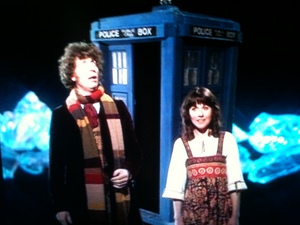











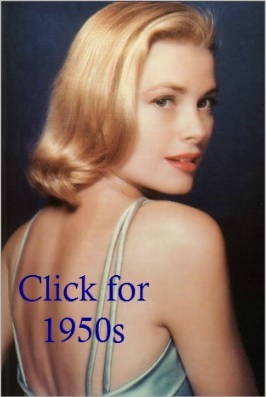

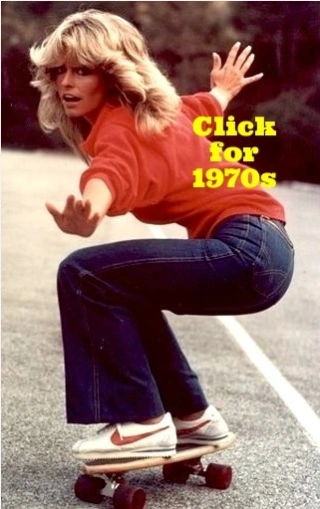
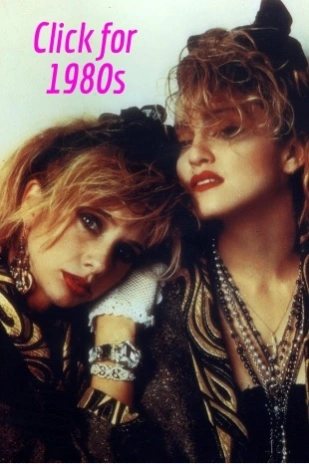






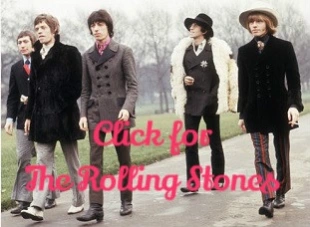

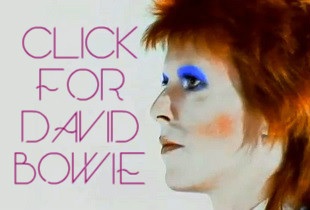
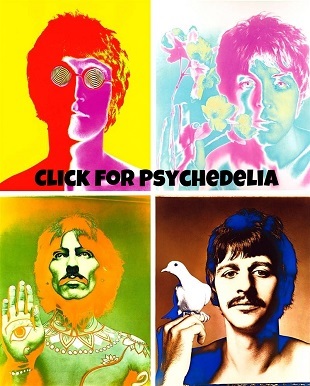



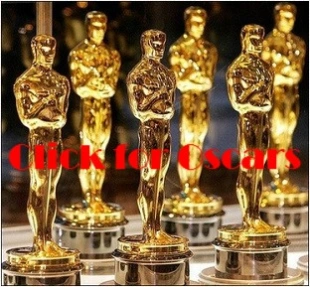

I remember all of the 10, with 1 exception. As a child I hated history, so I never watched “I, Claudius”.
However, that is an athema to me now because my heart is somewhere the Romans were first… Romania!
All were wonderful programmes.
As for the additions, I don’t remember the “Sonny and Cher comedy hour”.
But Python and Fawlty are always funny.
N.B. It has been nice to relive my memories of November 1963…. I remember the first episode “An Unearthly Child”.
I wonder WHO that could be…? :-))
Memories on You Tube, of course!
Yup, I’m certainly indebted to so many (actually, maybe all?) Doctor Who episodes being available currently on dailymotion – saves the pennies as one catches up, indeed! 😉
As ever, glad you enjoyed the post and thanks for your comments, Peter… 🙂
It was with great sadness that I heard on my return from holiday of the passing of Richard Briers, a wonderful gentlemen and a shining example of a true English gentleman both on and off of screen. Although I only met him twice during the last year of his life he was a wonderfully fair, easy spoken and expressed man with a great concern for his surroundings, environment and place within the world right till the end. He will be greatly missed by all who met him and all those who shared some of their happiest moments with him in their own living rooms over the years. My thoughts go out to your family.
Hear, hear, Simon. Thanks for your comment… 🙂
This wass a lovely blog post